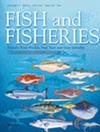东白令海鳕鱼渔业鲑鱼副渔获的驱动因素和动态
IF 6.1
1区 农林科学
Q1 FISHERIES
引用次数: 0
摘要
减少副渔获量是可持续渔业管理面临的普遍挑战,其重要性对正在减少的非目标物种或种群更为突出。在东白令海(EBS)白眼鳕鱼(Gadus chalcogrammus)渔业中,鲑鱼——最著名的是支努克鲑(Oncorhynchus tshawytscha)和鲑(O. keta)——被当作副渔获物。在EBS鳕鱼渔业中,鲑鱼的附带捕捞已经成为一个日益关注的问题,主要是由于阿拉斯加西部奇努克和鲑鱼的减少,它们支持对区域社区福祉至关重要的定向渔业。因此,最大限度地减少鲑鱼的副渔获量是管理的一个优先事项,并需要有关导致鲑鱼和鳕鱼船相遇的潜在过程的信息。在这项研究中,我们提出了一个广泛的综合奇努克和大马哈鱼副渔获动态在EBS鳕鱼渔业。我们对13年来(2011-2023年)收集的近12万份捕捞记录应用分层建模框架,量化了鲑鱼副捕捞量随时间和空间的变化模式及其环境驱动因素。我们的研究结果揭示了与海洋条件相关的大马哈鱼和奇努克鲑鱼副渔获物的空间结构和年际变化。我们还证明了底部深度和当地海面温度异常之间的相互作用对形成副渔获率的重要性,副渔获率因捕捞季节和鲑鱼种类而异。通过加深我们对鳕鱼船和鲑鱼相遇的因素的理解,这项研究可以为正在进行的管理工作提供信息,旨在最大限度地减少在不断变化的海洋生态系统中多物种鲑鱼的副捕获。本文章由计算机程序翻译,如有差异,请以英文原文为准。
Drivers and Dynamics of Salmon Bycatch in the Eastern Bering Sea Pollock Fishery
Minimising bycatch is a pervasive challenge for sustainable fisheries management, the importance of which is amplified for non‐target species or populations that are in decline. In the eastern Bering Sea (EBS) walleye pollock (Gadus chalcogrammus Oncorhynchus tshawytscha O. keta
求助全文
通过发布文献求助,成功后即可免费获取论文全文。
去求助
来源期刊

Fish and Fisheries
农林科学-渔业
CiteScore
12.80
自引率
6.00%
发文量
83
期刊介绍:
Fish and Fisheries adopts a broad, interdisciplinary approach to the subject of fish biology and fisheries. It draws contributions in the form of major synoptic papers and syntheses or meta-analyses that lay out new approaches, re-examine existing findings, methods or theory, and discuss papers and commentaries from diverse areas. Focal areas include fish palaeontology, molecular biology and ecology, genetics, biochemistry, physiology, ecology, behaviour, evolutionary studies, conservation, assessment, population dynamics, mathematical modelling, ecosystem analysis and the social, economic and policy aspects of fisheries where they are grounded in a scientific approach. A paper in Fish and Fisheries must draw upon all key elements of the existing literature on a topic, normally have a broad geographic and/or taxonomic scope, and provide general points which make it compelling to a wide range of readers whatever their geographical location. So, in short, we aim to publish articles that make syntheses of old or synoptic, long-term or spatially widespread data, introduce or consolidate fresh concepts or theory, or, in the Ghoti section, briefly justify preliminary, new synoptic ideas. Please note that authors of submissions not meeting this mandate will be directed to the appropriate primary literature.
 求助内容:
求助内容: 应助结果提醒方式:
应助结果提醒方式:


